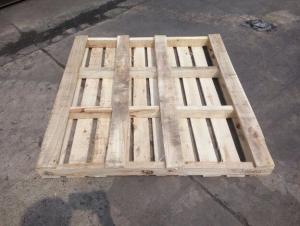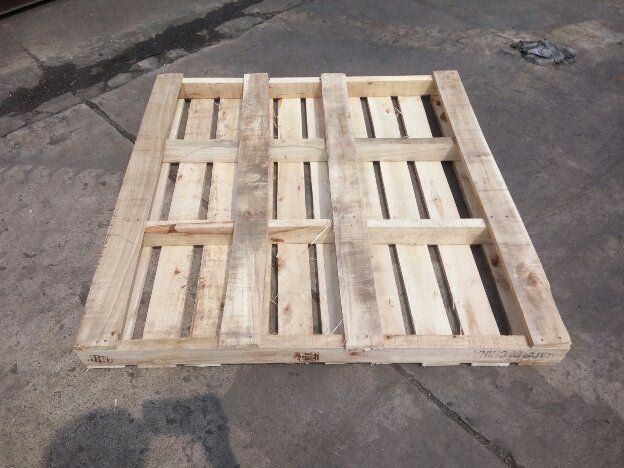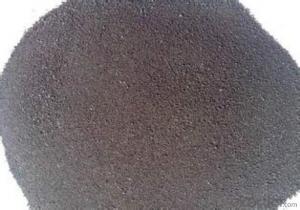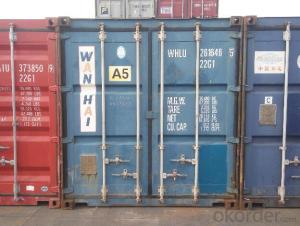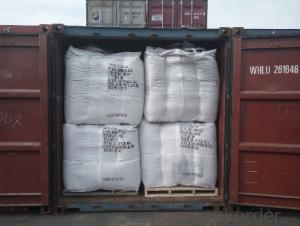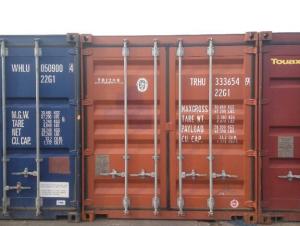Calcined Petroleum Coke as Injection Coke called CPC
- Loading Port:
- Tianjin
- Payment Terms:
- TT OR LC
- Min Order Qty:
- 20.7
- Supply Capability:
- 1017 m.t./month
OKorder Service Pledge
OKorder Financial Service
You Might Also Like
Intrduction
Carbon additive to ningxia production of anthracite as raw material, after washing, crushing, high temperature calcination, filter, etc. Craft refined and become.This is after the anthracite calcination generated high carbon content and low volatile component of the new product, is an ideal raw material to make steel.
Calcined Petroleum Coke comes from delayed coke which extracted from oil refinery. Although Calcined Petroleum Coke contains a little bit higher level of sulfur and nitrogen than pitch coke, the price advantage still makes it widely used during steel-making and founding as a kind of carbon additive/carburant.
Features
In the smelting process for reducing agent. Performance: replace the traditional oil carbon additive, decrease the cost of steelmaking. Features: low ash. low sulfur,low phosphorus, high calorific value. High ratio resistance,high mechanical strength,high chemistry activity. It is mainly used for metallurgy reductant inoculants, casting, refractory materials, machinery, electronics and other fields.Good quality
1) high absorption rate, it can be absorbed up to 90%.
2) absorbed more quickly than other carbon additive; no residue remains in furnace.
3) low Sulfur, the lowest can reach below 0.20%; low nitrogen, normally below 200ppm (0.02%)
Specifications
CPC | |||
F.C.% | 98.5MIN | 98.5MIN | 98MIN |
ASH % | 0.8MAX | 0.8MAX | 1MAX |
V.M.% | 0.7 MAX | 0.7 MAX | 1 MAX |
SULFUR % | 0. 5MAX | 0. 7MAX | 1MAX |
MOISTURE % | 0.5MAX | 0.5MAX | 1MAX |
Pictures


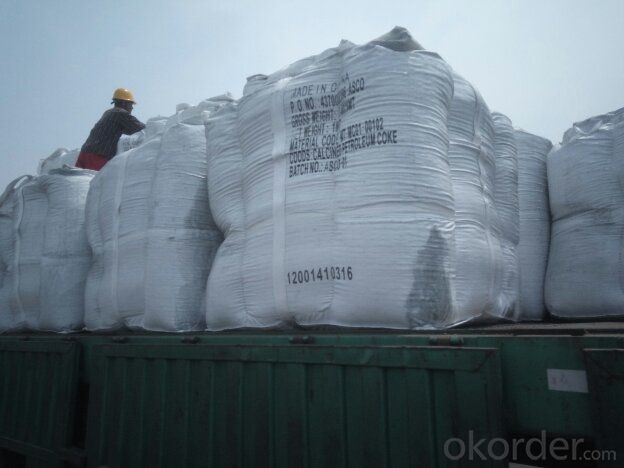

FAQ:
(1)CPC could be as fuel
Petroleum coke is a material relatively low in cost and high in heat value and carbon content with good chemical stability, making it an efficient and costeffective fuel for producing metal, brick and related products.
(2)CPC could be as Graphite Electrodes
Graphite can be produced from lowsulfur needle petroleum coke, which must be heated above 5,432 degrees Fahrenheit.
(3)CPC could be as Anodes
Calcined petroleum coke, often low in sulfur and metallic impurities, is used to make anodes for
the smelting industry.Calcined petroleum coke is mixed with coal tar pitch in the production of
anodes.
- Q: Process for producing carbon fiber board
- Carbon fiber forming process:1, pressing method. This method is put into the carbon fiber prepreg resin has the metal mold, the pressure of excess glue overflow, then high temperature curing, stripping the finished products come out, this method is the most suitable for production of auto parts.2, hand paste layer method. The impregnated carbon fiber sheets are cut or laminated, or so that the sides of the layer are brushed with resin and then pressed to form. This method can be used arbitrarily to select the direction, size and thickness of fibers and is widely used. Note that the shape of the layer is smaller than the shape of the mold, so that the fiber will not bend when it is pressed in the mold.3 、 vacuum bag hot pressing method. Laminated on the mold hill and covered with heat-resistant film, applying pressure from the soft pocket to the laminate and curing in hot pressing.4, winding forming method. The carbon fiber monofilament is wound on the carbon fiber shaft, and is especially suitable for making cylindrical and hollow containers.5, pultrusion. The carbon fiber is fully infiltrated, and the resin and air are removed by extrusion, then solidified in the furnace. The method is simple and suitable for preparing rod shaped and tubular parts.
- Q: What kinds of barbecue carbon do you have?
- The carbon has uniform size, long burning time, uniform fire, no smoke and no expensive price. Many professional barbecue shops choose this kind of carbon. The disadvantage is that it should not ignite. If only two or three people barbecue, with this carbon, then people are full, carbon has not used up, can not help but feel a little wasted.
- Q: How is carbon used in the production of carbon nanomaterials?
- Carbon is used as the raw material for the production of carbon nanomaterials. Different forms of carbon, such as graphite or carbon black, are transformed through various processes like chemical vapor deposition or arc discharge to create carbon nanotubes or graphene.
- Q: Is carbon a metal or non-metal?
- Located in group 14 of the periodic table, carbon is classified as a non-metal. Contrary to metals, non-metals possess properties that are typically the opposite, such as poor conductivity of heat and electricity, low melting and boiling points, and brittleness. Carbon, in particular, is renowned for its capacity to generate an array of allotropes, notably graphite and diamond. Although these allotropes exhibit distinct physical and chemical traits, they all share the common attribute of being non-metals.
- Q: How can individuals reduce their carbon footprint?
- Achieving a more sustainable future and reducing our carbon footprint can be accomplished through various actions. Consider the following effective methods: 1. Energy consumption reduction: The conservation of energy plays a vital role in decreasing carbon emissions. Make the switch to energy-efficient appliances, turn off lights when not in use, unplug electronics when not in use, and take advantage of natural lighting whenever possible. Additionally, adjusting thermostats to energy-saving temperatures and utilizing programmable thermostats can significantly decrease energy consumption. 2. Utilize renewable energy sources: A transition to renewable energy sources, such as solar or wind power, can drastically reduce carbon emissions. Install solar panels on rooftops, or explore the option of purchasing green energy from utility companies that provide renewable alternatives. 3. Decrease water usage: Indirectly, conserving water aids in reducing energy consumption and carbon emissions. Repair leaky faucets, shorten shower durations, install water-saving fixtures, and gather rainwater for outdoor activities. Additionally, consider implementing drought-resistant landscaping to minimize water usage for gardening purposes. 4. Consume mindfully: When making purchases, opt for sustainable choices. Select durable and long-lasting items, repair and reuse rather than replacing, and prioritize products made from recycled or sustainable materials. Furthermore, support local and sustainable businesses that prioritize eco-friendly practices. 5. Minimize transportation emissions: Reduce reliance on private vehicles by utilizing public transportation, carpooling, biking, or walking whenever feasible. If owning a car is necessary, choose electric or hybrid vehicles. Regular maintenance, proper tire inflation, and avoiding unnecessary idling all contribute to decreasing transportation emissions. 6. Embrace a plant-based diet: The food industry has a considerable carbon footprint, particularly due to livestock production. By reducing meat consumption or adopting a plant-based diet, carbon emissions can be significantly reduced while also offering health benefits. If a complete plant-based diet is not feasible, try incorporating more vegetarian or vegan meals into your eating habits. 7. Decrease waste generation: Waste contributes to greenhouse gas emissions, making waste reduction crucial. Opt for products with minimal packaging, diligently recycle, compost organic waste, and avoid single-use plastics. Plan meals, only purchase what is needed, and properly store leftovers to minimize food waste. 8. Support environmental initiatives and organizations: Engage with local and global organizations dedicated to environmental conservation. Take part in community clean-ups, support reforestation efforts, and advocate for sustainable practices in your workplace and community. By implementing these strategies into our daily lives, individuals can make a significant impact in reducing their carbon footprint and combating climate change. It is important to remember that every small action matters, and collectively, we can create a sustainable future for future generations.
- Q: Consult the carbon content of austenite
- It only refers to the iron carbon two element alloy, and the other alloys are different.
- Q: How does carbon affect the quality of soil?
- Soil quality is greatly influenced by carbon, which plays a vital role in its determination. When dead plants and animals decompose, they release carbon into the soil, a process known as carbon sequestration. This process is crucial for maintaining the fertility and health of the soil. The presence of carbon in the soil is beneficial for the growth of microorganisms such as bacteria and fungi. These microorganisms contribute to the breakdown of organic matter and the recycling of nutrients. Their presence helps create a fertile soil environment, ensuring that plants can absorb essential nutrients. Moreover, carbon in the soil improves its structure and its ability to hold water. It acts like a sponge, allowing the soil to retain moisture, which is essential for the growth and survival of plants. Carbon also prevents soil erosion by binding particles together, reducing the risk of nutrient loss and water runoff. Additionally, carbon enhances the soil's capacity to store and release nutrients. It acts as a reservoir for elements like nitrogen, phosphorus, and potassium, gradually releasing them to plants over time. This nutrient cycling is vital for sustaining healthy plant growth and productivity. However, modern agricultural practices, including excessive tilling, overuse of synthetic fertilizers, and deforestation, have caused a significant decline in soil carbon levels. This loss of carbon negatively impacts soil quality, resulting in decreased fertility, increased erosion, and reduced water-holding capacity. To counteract these negative effects, it is essential to adopt sustainable agricultural practices that focus on carbon sequestration and soil conservation. These practices involve reducing tillage, incorporating cover crops, practicing crop rotation, and using organic fertilizers. By increasing carbon levels in the soil, we can improve its quality, promote plant growth, and ensure the long-term sustainability of our agricultural systems.
- Q: What is the role of carbon in the human body?
- Carbon plays a critical role in the human body as an essential element for all organic molecules, serving as the backbone for many biomolecules including carbohydrates, lipids, proteins, and nucleic acids, which are vital for various physiological processes. To begin with, carbohydrates, being the primary source of energy for the body, heavily depend on carbon. Glucose, a simple sugar consisting of carbon, hydrogen, and oxygen, undergoes cellular respiration within cells to release energy. Complex carbohydrates like glycogen, which are stored in the liver and muscles as an energy reserve, also rely on carbon for their structural composition. Moving on, lipids such as fats and oils contain carbon and serve multiple purposes including energy provision, insulation, and organ protection. Carbon atoms form long hydrocarbon chains in lipids, making them hydrophobic and enabling efficient energy storage and release. Lipids also play a crucial role in cell membrane structure and hormone production. Additionally, carbon is a fundamental component of proteins, which participate in almost all cellular processes. Proteins consist of amino acids, with carbon atoms forming the backbone of these amino acids, providing stability and flexibility to the protein structure. Carbon also contributes to the formation of peptide bonds, which connect amino acids to build proteins. Proteins are necessary for functions such as enzyme catalysis, molecule transport and storage, immune response, and cell signaling. Lastly, carbon is an indispensable element in nucleic acids such as DNA and RNA, which contain genetic information. Carbon atoms create the sugar-phosphate backbone of nucleic acids, ensuring structural stability. DNA carries hereditary information, while RNA plays a vital role in protein synthesis. In conclusion, carbon is crucial in the human body as it forms the foundation of organic molecules like carbohydrates, lipids, proteins, and nucleic acids. Its versatility and ability to form stable bonds allow for the diverse functions and structures necessary for life processes.
- Q: What is carbon capture and storage?
- Carbon capture and storage (CCS) is a process that involves capturing carbon dioxide emissions from industrial sources, such as power plants, and storing them underground or using them for various purposes. It aims to mitigate the release of greenhouse gases into the atmosphere, helping to combat climate change by reducing carbon dioxide levels.
- Q: How is carbon dioxide formed?
- Carbon dioxide is formed through various natural and man-made processes. One of the primary sources of carbon dioxide is the combustion of fossil fuels such as coal, oil, and natural gas. When these fuels are burned for energy production or transportation, carbon in the form of hydrocarbons combines with oxygen from the air, resulting in the formation of carbon dioxide. Additionally, carbon dioxide is released during natural processes like volcanic eruptions and respiration by living organisms. During volcanic eruptions, molten rock releases carbon dioxide gas, which is then released into the atmosphere. Similarly, living organisms including humans, animals, and plants produce carbon dioxide as a byproduct of respiration, where oxygen is taken in and carbon dioxide is expelled. Deforestation and land-use changes also contribute to the formation of carbon dioxide. Trees and plants absorb carbon dioxide as part of photosynthesis, but when forests are cleared, this natural carbon sink is lost, leading to an increase in atmospheric carbon dioxide levels. Lastly, industrial processes such as cement production and chemical reactions in manufacturing also release carbon dioxide into the atmosphere. These processes involve the breakdown or burning of carbon-containing compounds, resulting in the release of carbon dioxide as a waste product. Overall, carbon dioxide is formed through a combination of natural processes and human activities, with the burning of fossil fuels being the largest contributor to its increased levels in the atmosphere.
Send your message to us
Calcined Petroleum Coke as Injection Coke called CPC
- Loading Port:
- Tianjin
- Payment Terms:
- TT OR LC
- Min Order Qty:
- 20.7
- Supply Capability:
- 1017 m.t./month
OKorder Service Pledge
OKorder Financial Service
Similar products
Hot products
Hot Searches
Related keywords
